Potassium permanganate is an essential chemical for various simple living applications. One is its disinfecting effects, and the other is the possibility of chemically starting fires. This article discusses disinfecting water on a small scale for drinking purposes. We will not cover industrial-scale water disinfection or disinfection for medical purposes. Using potassium permanganate for fire starting will be related to a future article.
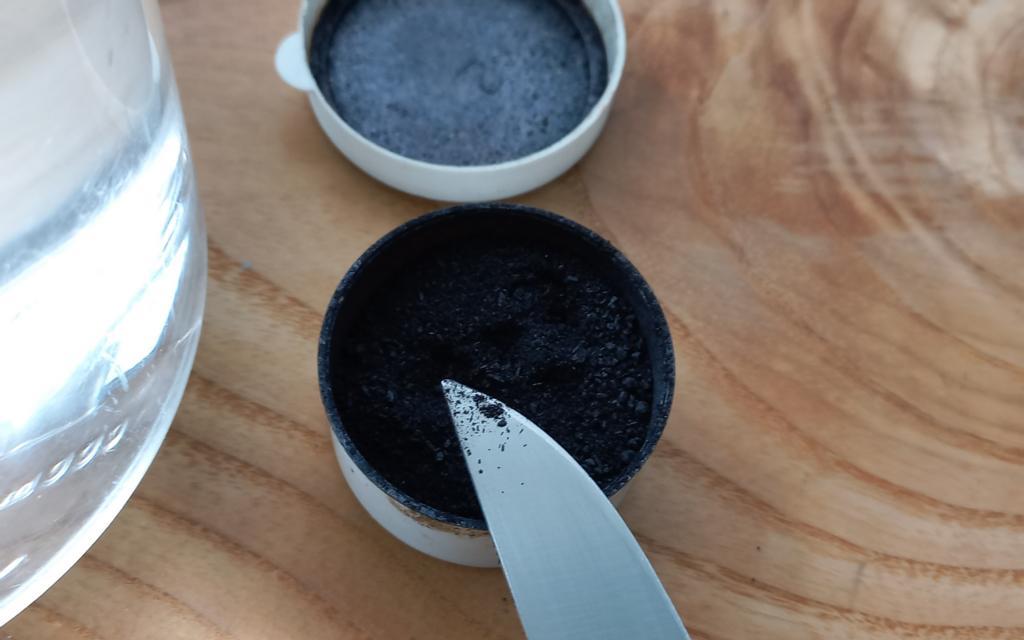
What is potassium permanganate chemically?
Potassium permanganate, with its chemical formula of KMnO4, is a manganese salt in the +7 oxidation state. As the chemical formula suggests, it consists of one manganese atom surrounded by four oxygen atoms next to a potassium ion. This ion acts as a potent oxidizing agent, allowing it to add oxygen, remove hydrogen, or strip electrons from an element or compound. It, therefore, can break down organic material, including bacteria, parasites, fungi, etc. For further information, please read the article at this link.
In which forms KMnO4 can be obtained?
Potassium permanganate is traded as crystals, powder, or ready-made solutions. Crystals and powders are readily available in many African and Asian countries, where they are mainly used for disinfecting vegetables. They are available in small plastic cans or boxes with 5-gram / 77-grain contents, but bigger boxes with 20g, 100g, and 1 kg are also available. Especially in India, KMnO4 crystals and powders are widely available for disinfecting purposes in private households.
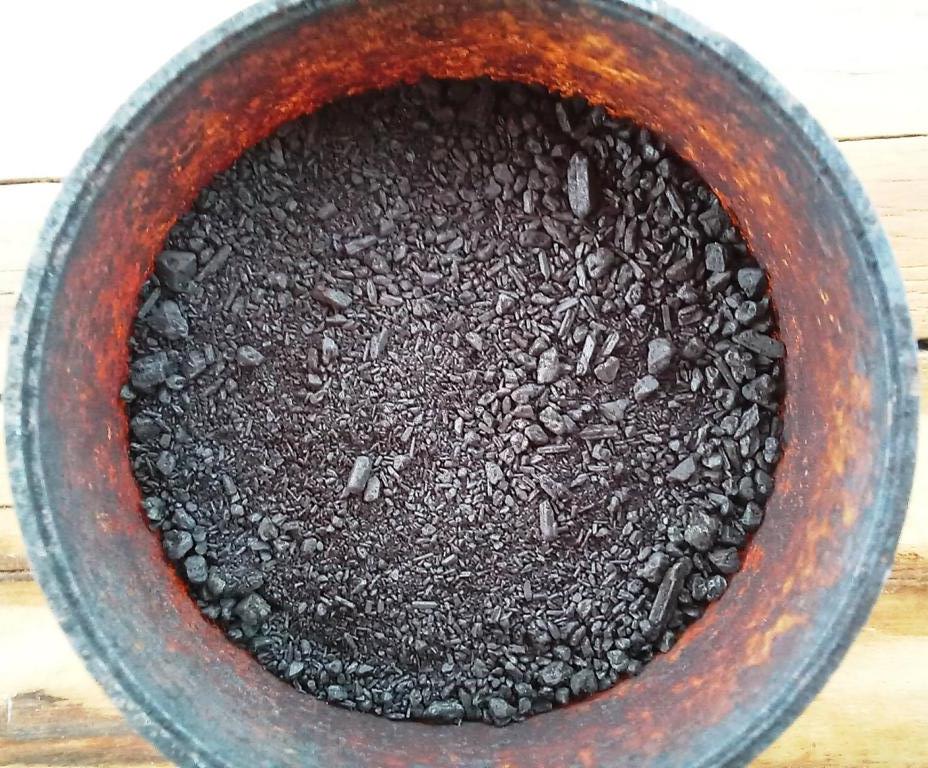
In many other countries, KMnO4 is only available from pharmacies as a liquid 1% SR (Standard dilution) in 100ml / 3.38 us fl oz bottles.
Characteristics of potassium permanganate
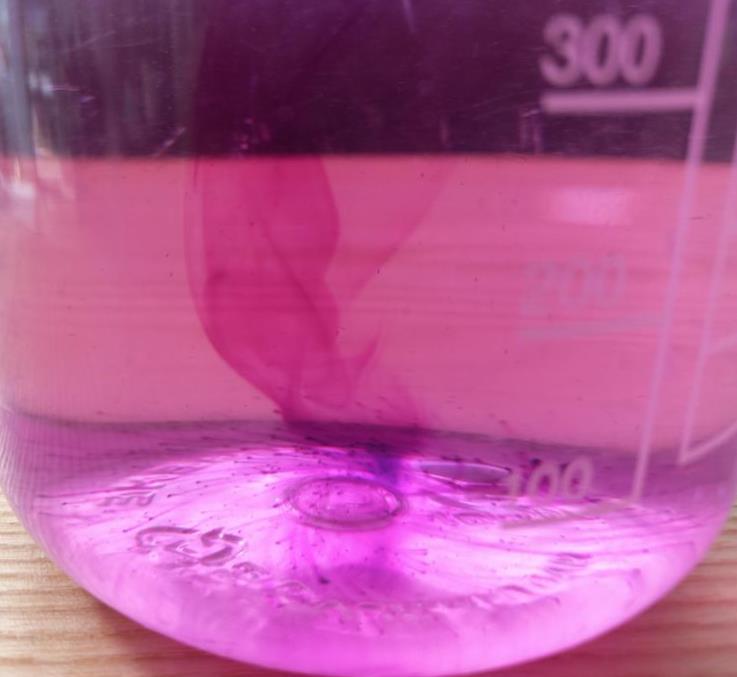
- As already mentioned, it is an oxidizing agent. As a side effect of its oxidation, hydrosulphates (the smell of rotten eggs) are broken down, removing the muddy taste and smell of stale water. However, this action is not continuous, and the chemical loses oxygen rapidly in oxidizing organic matter.
- Strong color. The purple color indicates its concentration in a water solution. For disinfection, it often imparts a brown color to the water due to the reduction of permanganate by organic matter, forming brown colloidal manganese compounds. A disadvantage of the strong coloration is that it creates brown stains on textiles and other surfaces, which are difficult to remove.
- It is highly soluble in water, so various concentrations can be produced easily.
- Potassium permanganate is a chemically stable compound that can be stored long.
Disinfecting of small amounts of water with KMnO4
In India, it is most common to use potassium permanganate to treat well water and other stale water sources.
A 1-in-200.000 dilution (slightly purple color) was found to be strong enough to kill the number of pathogenic organisms, especially cholera vibrio, that are ordinarily likely to infect well waters. The same dilution was able to kill typhoid bacilli over a duration time of 24 hours. Such results, however, can only be gained if the water’s organic matter content is low. Otherwise, KMnO4 will use up its oxidizing potential on these organic particles. Mechanical filtering can remove most of these disturbing matters.
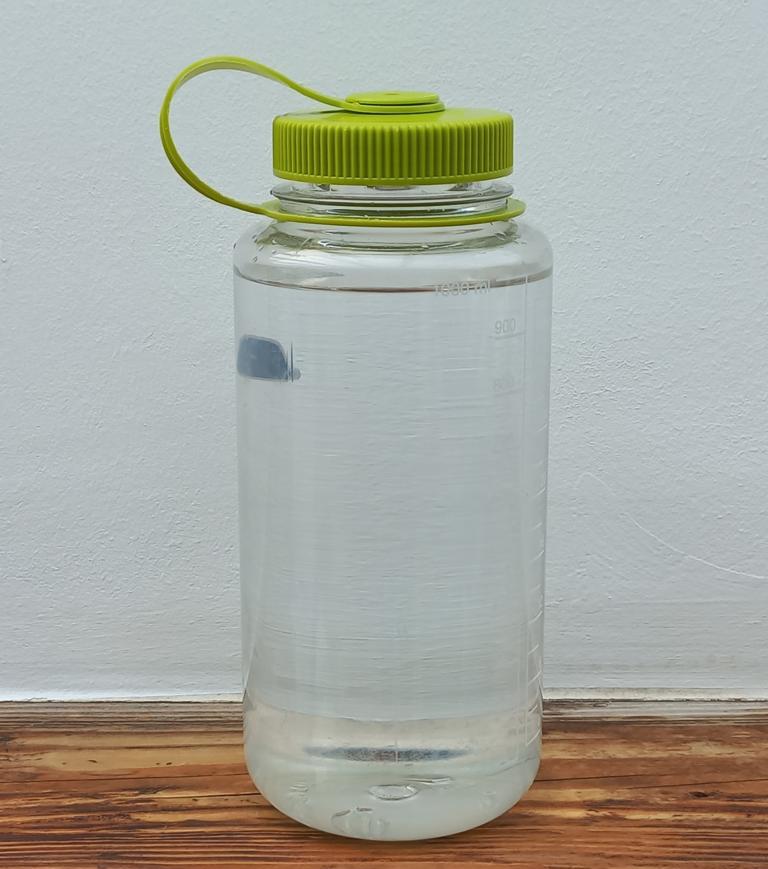
The picture shows a 1 liter / 33.8 fl oz of clean natural water for color comparison to the following KMnO4 dilution examples.
Undrinkable dilutions
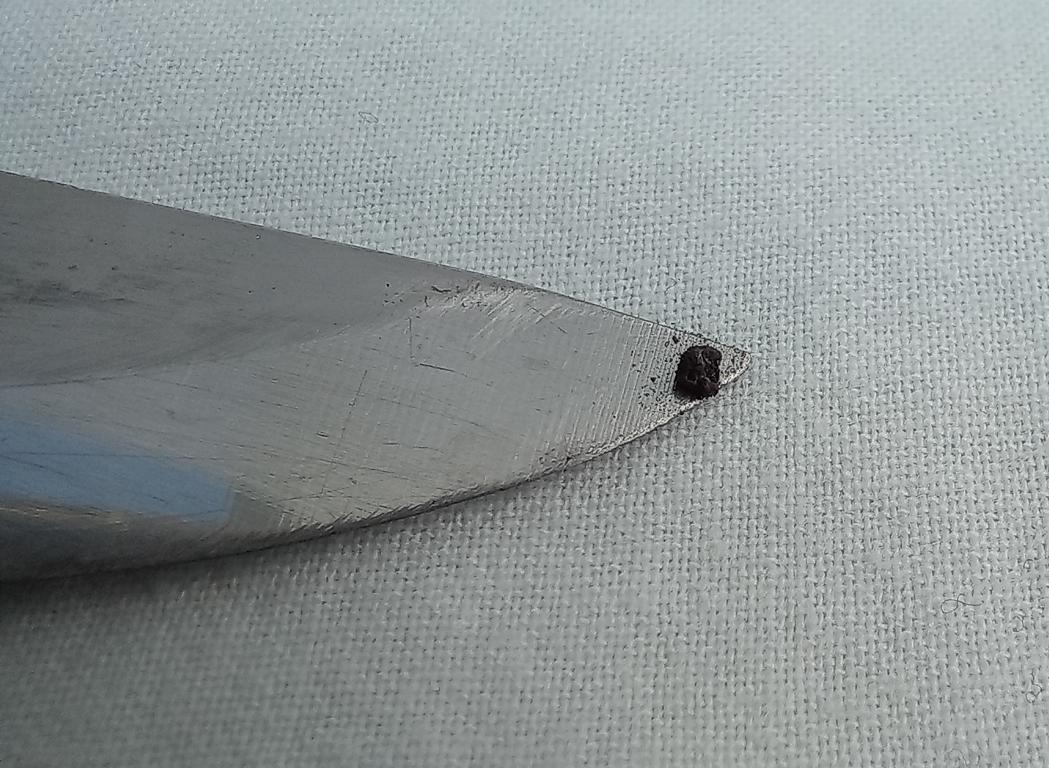
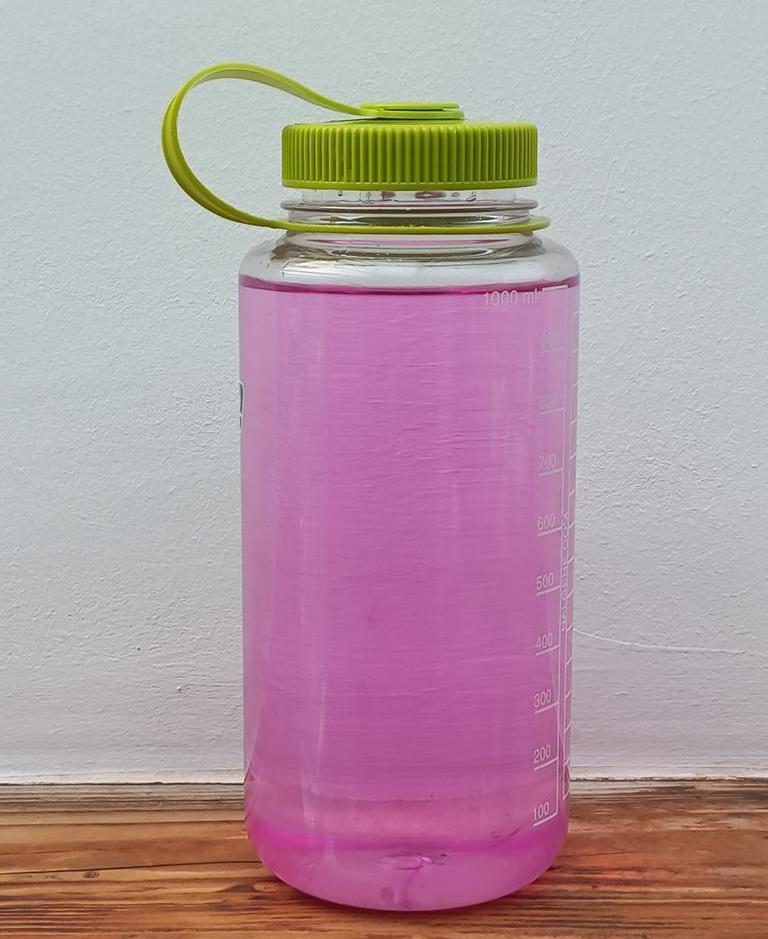
One chunky potassium permanganate crystal in 1 liter of water gives the water a strong purple color. This color indicates roughly a 1-in-50.000 dilution. Such a concentration of KMnO4 is at least unhealthy, and this water is NOT suitable for drinking. Stomach pains and vomiting may occur.

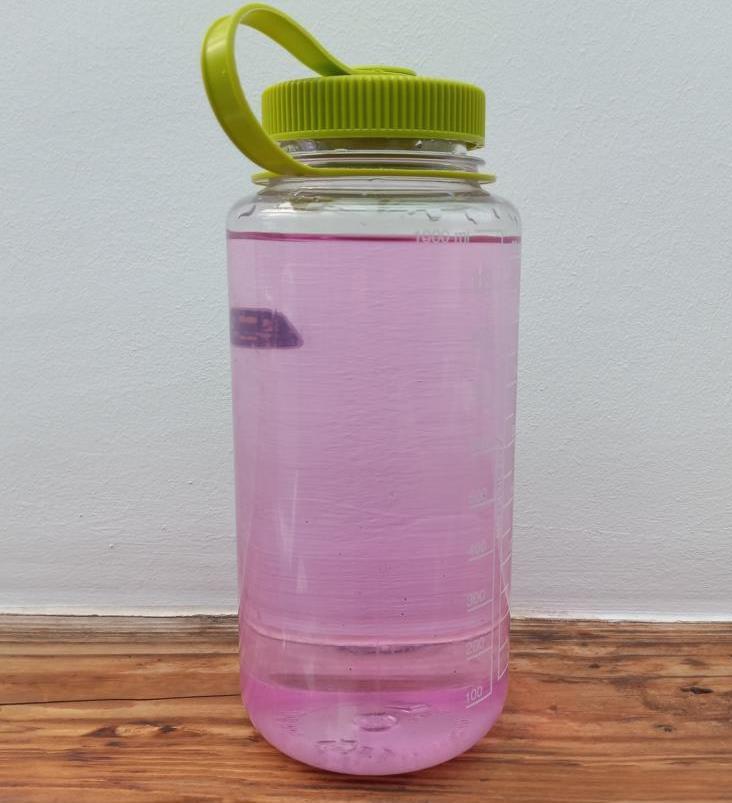
A flat layer of potassium permanganate powder on a knife tip turns 1 liter of water purplish. This color indicates roughly a 1-in-100.000 dilution. Such a dilution can be used to wash vegetables but is still unsuitable for drinking.
I lived with my family for over four years in India, and my wife always washed the vegetables in such a KMnO4 solution to kill off unwanted organisms. The potassium permanganate solution on these vegetables was thereafter removed with distilled water. We also put potassium permanganate crystals in a similar dilution into the bathtub for the kids in case they had prickly heat rashes, which was effective.
Drinkable dilution
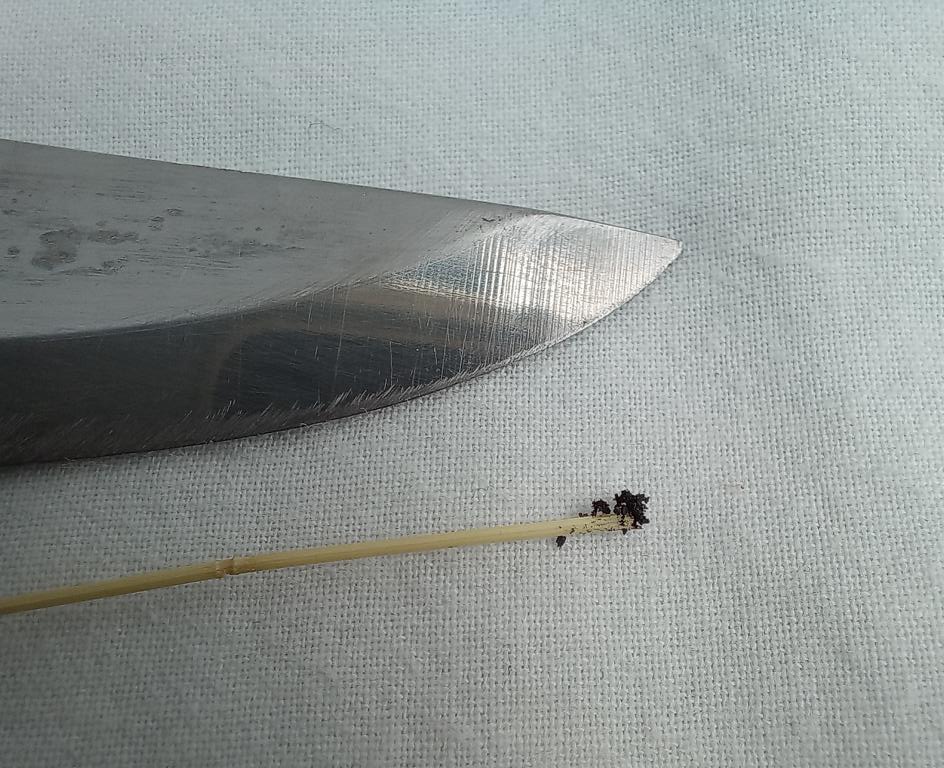
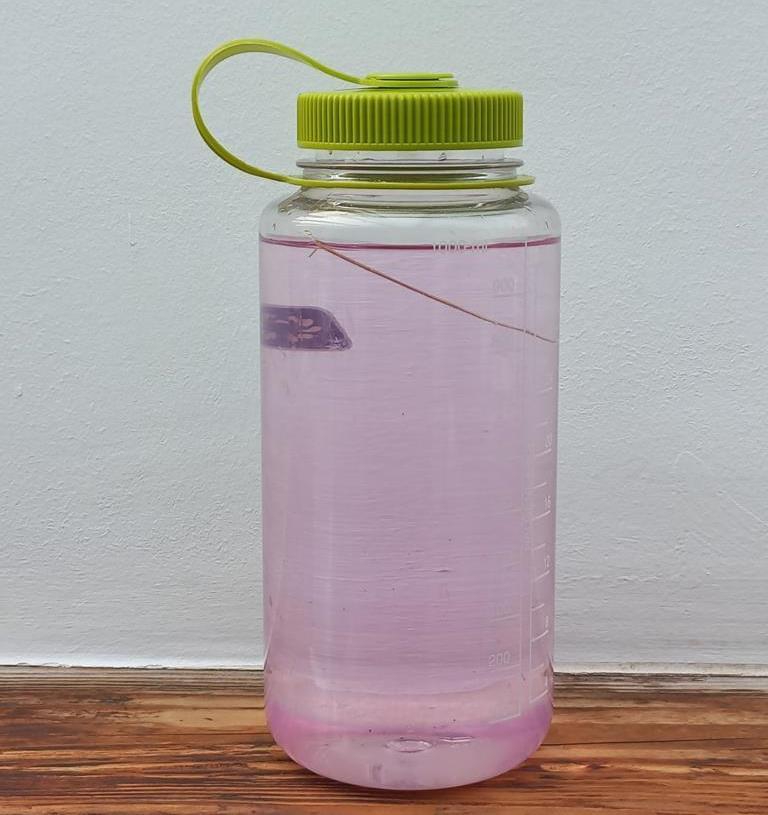
A very small amount of KMnO4 powder on top of a slim grass culm will slightly purplish 1 liter of water. This color indicates roughly a 1-in-200.000 dilution. The author drank the resulting concentration over a longer period of time without ill effects.

Mixing a ‘1-in-200.000’ dilution means diluting 1g / 0.02 grains of KMnO4 into 200.000g / 4.000 grains of water (which is 200 liters / 52.8 gal). Therefore, this dilution contains 0.005 grams (5 milligrams / 5 grains) in 1 liter of water. For comparison, one rice grain weighs 21 mg / 0.42 gr. The specific density of potassium permanganate (2.7 g/cm3 / 0.1 lb/in3) is about double as much as rice grains (1.45 g/cm3 / 0.05 lb/in3). Therefore, its 5 mg will be about the volume of 1/8 of a rice grain. Therefore, the amount of KMnO4 shown on the grass culm seems correct for creating a drinkable dilution.
Summary
As seen from the above pictures, the dilution of the chemical must be strictly controlled by the created color. It is also important that the solution will be given time to dilute all KMnO4 powder particles in the water. This can take up to half an hour. To neutralize harmful organisms, a remaining time of 2 – 24 hours is necessary. Only after that time the bacteria levels will be reduced to acceptable levels.
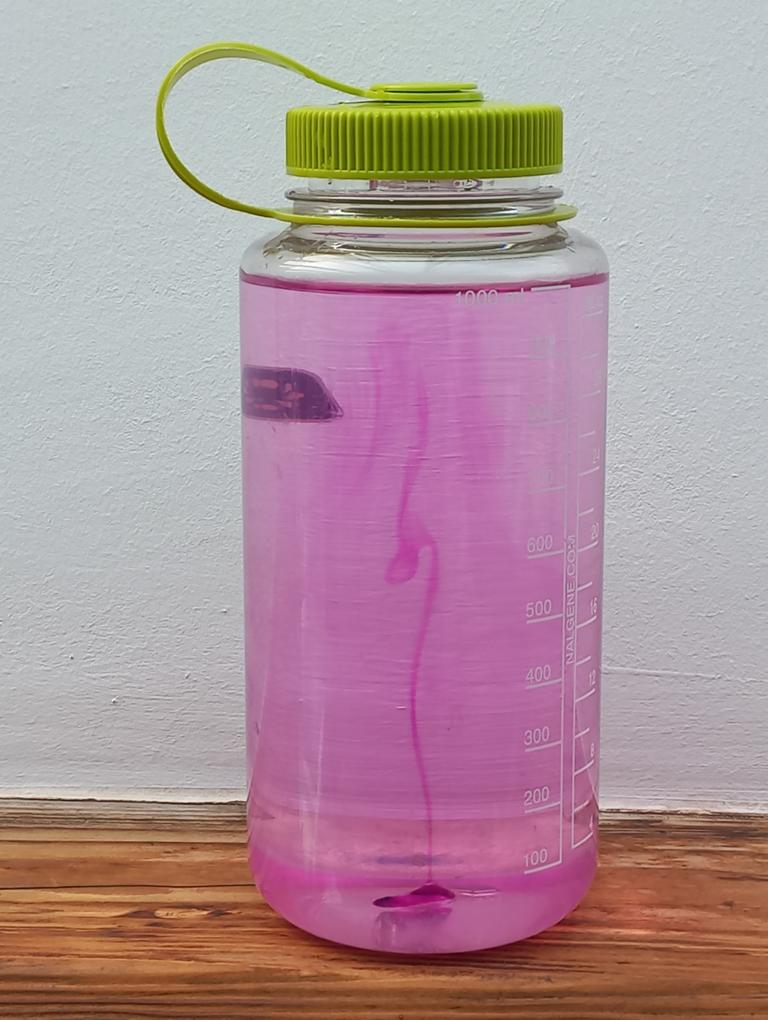
A too-high concentration of potassium permanganate will be harmful to humans. It is unknown how much the body characteristics of different individuals will affect or create a response to the mentioned dilutions. The author has drunk a 1-in-200.000 dilution regularly over some weeks, and no detrimental effect was observed.
Due to the fine borderline between the chemical acting as a welcomed water disinfectant and being a harmful agent, potassium permanganate can only be recommended for water disinfection on a non-industrial scale if dosed very precisely.
Lessons learned from disinfecting water with potassium permanganate
- Potassium permanganate is widely available in many African and Asian countries.
- The main application is disinfecting vegetables for human consumption.
- A KMnO4 solution is also used to cure sores and rashes.
- To disinfect drinking water on a small scale, a dilution of 1-in-200.000 is necessary.
- With such a dilution and a remaining time of 24 hours, about 98% of cholera and typhus bacteria can be deactivated.
Disclaimer
Just as a reminder, our website’s disclaimer can be found here and reads as follows: ‘All the information on this website—https://www.bushguide101.com—is published in good faith and for general information purposes only. Bushguide 101 does not make any warranties about the completeness, reliability, or accuracy of this information. Any action you take based on the information you find on this website (Bushguide 101) is strictly at your own risk. Bushguide 101 will not be liable for any losses and/or damages in connection with using our website.‘
Further readings about Water Disinfection on this website:
Water disinfection by UV-rays from the sun
.




